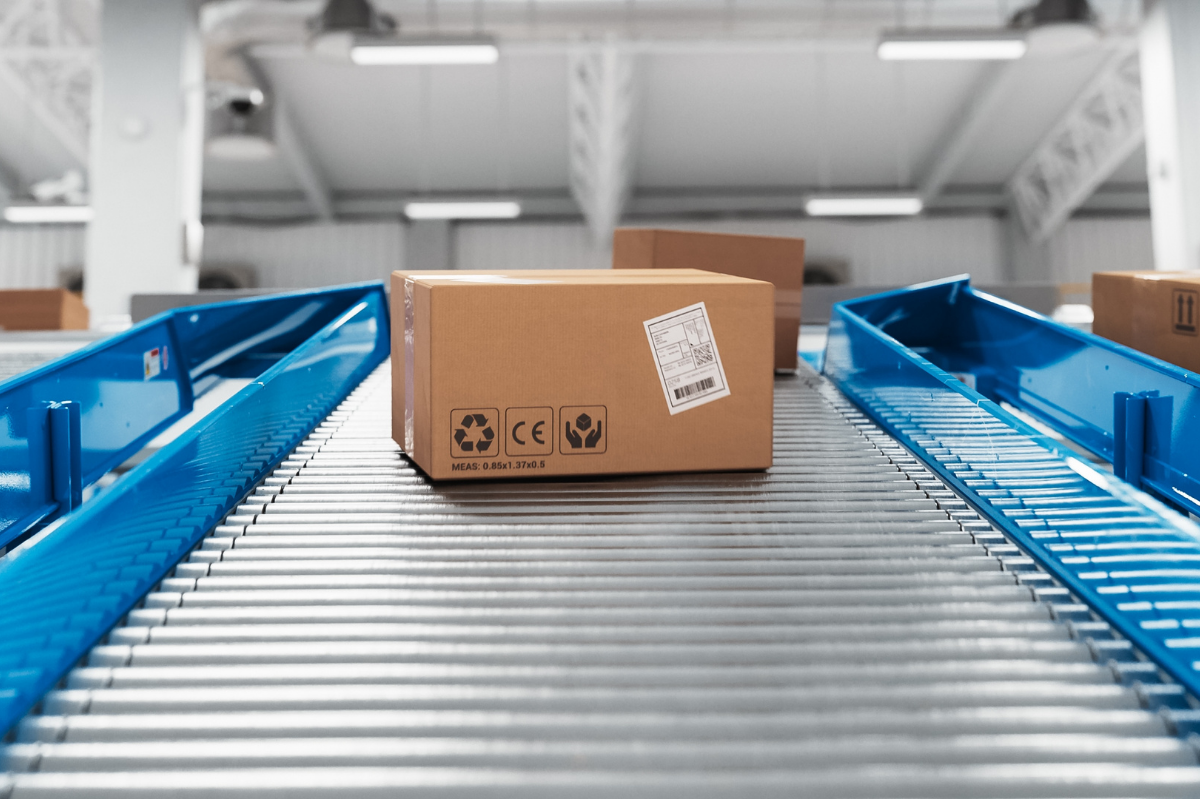Shipping is one of the most variable, and often overlooked, drivers of margin pressure in ecommerce. As brands scale, fulfillment complexity increases, and with it, the opportunity for costs to quietly compound across zones, carriers, and operational workflows.
That’s where shipping intelligence comes in. It’s not about collecting more data points, but understanding how to use them. The most successful brands aren’t just tracking costs; they’re applying data to actively reduce them, automate smarter decisions, and optimize their shipping networks with precision.
Shipping intelligence gives brands access to cost savings, broader service networks, and optimized pricing models that would be difficult or costly to achieve on their own.
This article explores how shipping intelligence works in practice, where unnecessary costs are most likely to hide, and what actionable steps operations leaders can take to turn data into measurable savings.
What Is Shipping Intelligence?
Shipping intelligence is the strategic use of shipping data, combined with automation, system integration, and feedback loops, to reduce cost, improve delivery outcomes, and scale fulfillment more efficiently.
It goes beyond just dashboards and tracking metrics. True shipping intelligence connects data from multiple systems (WMS, OMS, carrier APIs, customer support platforms) and leverages existing systems within the supply chain to improve efficiency and identify cost-saving opportunities, informing decisions in real time and guiding improvements across:
- Carrier selection
- Zone optimization
- Packaging logic
- SLA risk management
- Inventory distribution strategy
Understanding Fulfillment Operations
Fulfillment operations are the backbone of any successful ecommerce business, directly impacting both costs and customer satisfaction. These operations encompass everything from inventory management and order processing to packaging and shipping. To optimize fulfillment operations, businesses must focus on streamlining processes, managing labor costs, and controlling storage and material costs.
Investing in technology and comprehensive training programs for staff can significantly enhance customer satisfaction by ensuring orders are processed accurately and shipped promptly. Efficient inventory management and smart inventory distribution strategies help reduce overhead costs and make the best use of available storage space.
For many ecommerce businesses, outsourcing fulfillment operations to specialized providers can further reduce costs and improve efficiency, allowing them to scale without the burden of managing complex logistics in-house.
Where Shipping Costs Accumulate Without Detection
Even sophisticated brands often miss the granular inefficiencies that drive up fulfillment costs. Order fulfillment costs, in particular, can accumulate as hidden expenses within the overall supply chain, especially if not closely monitored and optimized. Here are five common examples—and how a data-driven strategy can address each one.
1. Excessive Use of Expedited Shipping Due to Internal Delays
Many brands default to expedited shipping when warehouse processes fall behind or inventory is misallocated. Delays in inbound logistics or receiving operations—such as slow ASN processing or inefficient dock scheduling—can also contribute to internal delays and the need for expedited shipping. These last-minute upgrades are often avoidable.
- What to track: Pick-pack timestamps vs. cut-off times; orders auto-upgraded to meet SLAs
- How to fix it: Adjust warehouse schedules and reallocate inventory by region to reduce the need for air shipping
2. Inefficient Packaging That Drives Up Dimensional Weight Fees
Improper box selection often goes unnoticed but has a significant impact on shipping costs, especially when carriers bill by dimensional weight. The packaging process is a critical component of order fulfillment, directly impacting costs, efficiency, and customer satisfaction. Packing is also a strategic activity that affects both cost management—by reducing material waste and optimizing box sizes—and customer satisfaction by ensuring items arrive safely and efficiently.
- What to track: Average DIM weight vs. actual weight; SKU-to-box pairing history
- How to fix it: Run packaging audits, refine auto-boxing logic, and build SKU-level packaging rules based on shipping outcomes
3. Hidden Costs in Carrier Performance
Cheaper label rates do not always translate to lower total costs. Missed delivery windows, damaged goods, and re-shipments often cancel out the initial savings. Efficient freight management is crucial for reducing costs and improving delivery outcomes, making it an essential factor when evaluating carrier performance.
- What to track: SLA compliance, return rate, refund requests, and re-shipment costs by carrier
- How to fix it: Blend shipping and support data to build a true cost-per-carrier model that accounts for quality as well as price
4. Avoidable Split Shipments from Poor Inventory Placement
Split shipments increase labor, packaging, and shipping costs. Many are caused by preventable SKU placement issues or weak inventory allocation logic.
- What to track: Frequency of specific SKU pairs being split across locations
- How to fix it: Use co-purchase and SKU affinity data to optimize warehouse stock levels and improve inventory storage solutions, further reducing unnecessary split shipments and fulfillment costs
5. Misuse of Flat Rate Services for Low-Weight Orders
Flat-rate boxes offer predictability but can be more expensive than needed for lightweight shipments—especially within short delivery zones.
- What to track: Flat-rate usage by weight class and destination zone
- How to fix it: Run cost comparisons across ground services and regional carrier rates; evaluate different pricing models to ensure the most cost-effective shipping options are selected; update shipping rules based on weight/zone logic
Inventory Management Strategies for Shipping Savings
Effective inventory management is a powerful lever for reducing fulfillment costs and boosting customer satisfaction. By adopting smart inventory management strategies, ecommerce businesses can optimize fulfillment operations, reduce labor costs, and minimize storage costs.
One proven approach is implementing a just-in-time inventory system, which ensures inventory is ordered and received only as needed to meet customer demand. This reduces the risk of excess inventory, lowers storage costs, and frees up valuable warehouse space.
Leveraging data analytics is another key strategy—by analyzing sales trends and predicting demand, businesses can optimize inventory distribution across multiple locations, reducing the need for costly expedited shipping and improving delivery times.
By continuously monitoring inventory levels and using data to inform decision making, businesses can reduce ecommerce fulfillment costs, streamline operations, and deliver a more reliable order fulfillment experience.

Overhead Costs Reduction in Fulfillment
Overhead costs, such as labor, storage, and equipment expenses, can quickly erode margins in fulfillment operations if not carefully managed. To reduce these costs, many ecommerce businesses are turning to outsourcing fulfillment operations to third-party logistics providers. This approach can help reduce labor costs, improve efficiency, and allow businesses to focus on core activities while experts handle logistics operations.
Investing in automation technologies, like robotics and conveyor systems, is another effective way to streamline fulfillment processes and reduce labor costs. Automation not only increases productivity but also minimizes human error, leading to more efficient and cost-effective operations. Optimizing warehouse space through efficient storage systems and reducing waste further lowers storage costs and boosts overall productivity.
Efficient fulfillment operations not only improve the bottom line but also ensure that ecommerce businesses remain agile and competitive in a rapidly evolving market.
Applying Data for Actionable Savings
Gathering data is only the first step. The real impact of shipping intelligence comes from putting that data to work across your systems and teams. These tactics can help boost efficiency in order fulfillment and supply chain operations. Here are some proven tactics:
Integrate Multi-Source Shipping Data
Centralize insights from your WMS, OMS, carrier APIs, support channels, and sales channels so you can evaluate cost drivers holistically, not in silos.
Automate Cost-Efficient Carrier Selection
Use rate shopping tools that include historical SLA data, not just price, and focus on optimizing the ship process to improve efficiency and reduce costs. Prioritize the lowest effective cost per carrier, per lane.
Improve Packaging Logic
Pair shipping outcomes with SKU dimensions and order frequency to reduce overpacking and DIM charges, optimizing overall order fulfillment operations.
Align Warehouse Performance with SLA Requirements
Track fulfillment speed by shift and zone, monitor and optimize key warehouse tasks to meet SLA requirements, and tie it back to shipping upgrades caused by missed cutoffs or capacity limitations.
Surface Costs Across Teams
Design dashboards that link operational decisions—including evaluating the effectiveness of processes in house compared to outsourced solutions—to financial outcomes so operations and finance teams can collaborate around tradeoffs.
What This Means for Ecommerce Brands
Shipping costs are no longer fixed expenses—they’re variables you can control. But only if you have the data and decision systems to act on them.
For growing ecommerce businesses, shipping intelligence is a competitive advantage. Companies can benefit by leveraging fulfillment services offered by third-party logistics providers to achieve reduced costs and improved efficiency. It allows you to scale operations while protecting margin, meet delivery expectations without overspending, and build a fulfillment strategy that evolves with demand.
This approach doesn’t require a massive overhaul. Most brands already have the data—they just need the tools, logic, and processes to make it useful.
VESYL’s Shipping Intelligence & Analytics
Here's how VESYL brings shipping intelligence to life with actionable analytics and automation:
- Centralized, Real-Time Visibility: VESYL’s analytics interface unites shipment tracking from placement to delivery—including real-time shipment status, delays, and carrier performance—so you're always ahead of issues.
- Actionable Cost Analytics: Track shipment costs, compare carrier rates, analyze zone-level costs, and pinpoint warehousing and storage inefficiencies—all through clean, intuitive dashboards.
- Custom Reports & Dashboards: Generate tailored reports on total spend, shipment volume, average shipment cost, delivery success by region, outliers, trends, and spend.
- Carrier Performance & Forecasting: Identify underperforming carriers, automate selection rules, forecast order volume by zone, pre-position inventory, and adjust staffing to meet demand.
- Proactive Customer Experience: Detect delays early to enable proactive outreach, rerouting, or compensation, helping protect brand trust.
- Seamless Integration & Automation: Beyond analytics, VESYL also offers rate shopping, batch label printing, and automation workflows—connecting fulfillment with data-driven decision-making across your systems.
VESYL offers a turnkey way to activate shipping intelligence—through centralized analytics, performance monitoring, diversified integrations, and automation—so that fulfillment decisions don’t just stay in silos but drive measurable cost savings and operational efficiency.

Conclusion
Shipping intelligence isn’t about collecting more data. It’s about asking smarter questions and designing operations around the answers.
Shipping data plays a crucial role in informing global trade and seaborne trade, supporting economic growth and enhancing supply chain resilience. Optimizing warehousing, investing in well trained employees, and reducing human error through automation are key strategies for achieving operational excellence.
In a market where small operational gains compound into significant financial results, the brands that use shipping data strategically will be the ones positioned to grow—efficiently, profitably, and sustainably.
Related Topics
Learn how VESYL can save you money on shipping
Not sure which plan suits you best? Have questions about our software? Contact our sales team for expert guidance.

.png)
.png)




